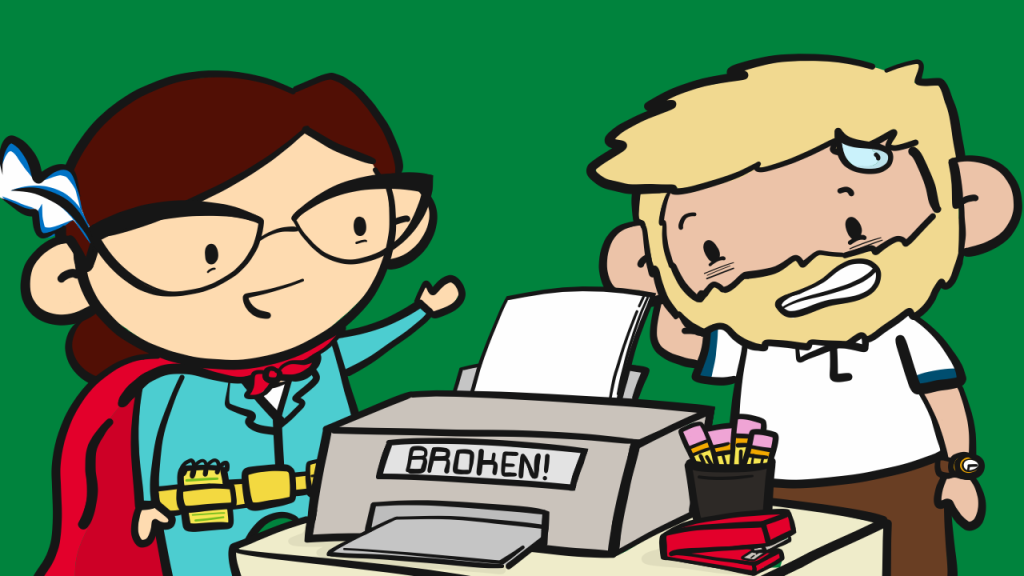Defensive behavior at work is something we all have to deal with, and it doesn’t only come from bosses or those in positions of power. The morning janitor, your project partner, an assistant, anyone can be defensive. Despite being common in the workplace, defensiveness is not something that’s easy to deal with. It can also make for uncomfortable situations, gossip and animosity.
Applying the strategies below can help you effectively deal with defensive behavior in the workplace with the intent to decrease and/or stop it.
-
Manage defensive behavior by understanding it
Defensive behavior happens when someone perceives they are being threatened and in turn, behave in a way to protect themselves. Understanding that defensive behavior often has less to do with logic and more to do with emotion can help you decide how to approach someone who typically gets defensive or you see the behavior coming on. If someone you are working with is acting defensive, the first question to ask yourself is why.
While, you will likely not have the exact answer, being aware and identifying the behavior is occurring will help you act accordingly to diffuse the situation by NOT acting the same. Remember, acting back with defensiveness of your own will only add fuel to the fire and make the situation worse. Instead, identify it and react accordingly, with help from the strategies below.
-
Deal with defensiveness by asking the right questions
When a person gets defensive, they feel threatened and this can come from a slew of reasons, often having little to do with you. But when a coworker gets defensive, it becomes your problem so what if, instead of getting defensive yourself, you asked questions in a non-threatening way to get to the point. But remember, it’s all about the way you ask.
Take this example – imagine that you ask a coworker about the timeline for their part of a group project that is late by asking “Why are you late on it?” This in turn gets them hot and bothered, causing them to blurt out, “I don’t just sit here thinking only about this project.”
What if instead, you approach the situation differently by asking, “What is still needed to get the report done?” This type of question takes away blame but also gets to the point that work still needs to get done.
Asking specific fact-finding questions that place the focus on the task or action rather than placing blame on the person will help avoid defensive responses saving everyone involved time and energy.
-
Diffuse defensiveness by overcoming it with kindness
A knee-jerk reaction is not typically to be kindhearted but what if, when you are in the middle of a defensive storm, you make it go away with sunshine? Think about it… it’s much harder to be brash and agitated when the only response you’re getting in return is one of polite calmness. Also, the contrast in the actions will likely draw attention to the defensive behavior, providing an opportunity for the defensive coworker to see what it is they are doing and make a change. As you ask the “right questions” as discussed above, remember to do so with a kind tone.
Imagine this scenario – you and a fellow coworker are talking about a broken printer that they were the last to use. You ask the “right questions” instead of pointing blame with “you” questions and you do so in a calming tone, using nonverbal communication – smiles, eye contact, arms unfolded – to convey a safe space rather than one that feels threatening. You may be very surprised at how much quicker the situation is solved.
-
Deal with defensiveness by being transparent and communicative
When dealing with defensive behavior in the workplace, it is a good bet to act with transparency and open communication. Allow no reason for someone to get defensive by looking at your own actions and making sure you are thorough, honest and concise when interacting with colleagues and clients.
- Also, be aware of your tone and what words you use. Allow for no misinterpretation. That way, should someone still get defensive, you can let them know the details are all there and to ask if they have additional questions or concerns. Diffuse the defensive behavior by walking away from it and setting boundaries for what is acceptable. And remember, you have nothing to be defensive about.
Defensive behavior is often a sign of insecurity, irresponsibility and unhappiness. While you can try to figure out the why, that can take you all day and unless you are in a therapy type business, chances are you won’t have the time (nor desire!) to do so. Utilizing the above-mentioned strategies can help manage it though as it is part of most workplaces. And remember to take no part in it yourself.



